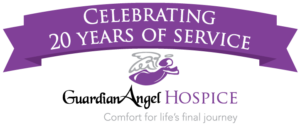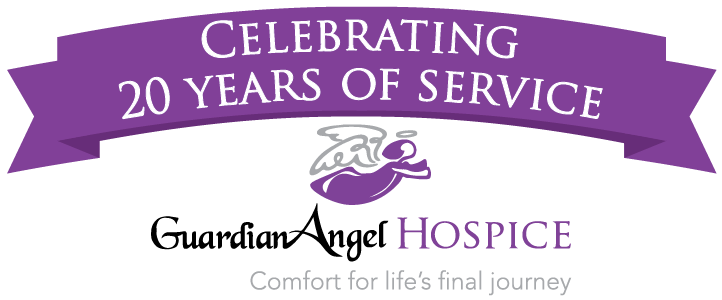Journey in Caregiving
Helpful tips for family caregivers
August/September 2015
From purpose to practicality. This month we look at what the research tells us about the benefits of a purpose-full life. We help you get a handle on osteoarthritis and ways to reduce the pain through activity. We also offer you a practical list of the things that need to get handled in the first few weeks following a death.
Living with purpose
“Meaning helps us see in the dark.” Rachel Naomi Remen, MD
When life seems overwhelming, purpose helps us find meaning and stay true to our values.
And research indicates that leading a purposeful life pays all kinds of dividends. People who report living with a sense of meaning and purpose are found to have
- greater resilience in the face of challenges and stressors;
- better overall physical and mental health, including less heart disease and depression;
- longer lives, outliving their peers (whether age 20 or age 75);
- protection against memory loss, including Alzheimer’s disease.
Here are some tips for defining a current sense of purpose.
- Check in with yourself. Look at the big picture in a fresh way. Why do you get up in the morning? What brings meaning to your life? When do you feel satisfaction? When do you feel most in sync with your values?
- Write a statement of purpose. Relate it to your current circumstances. Purpose tends to involve making a contribution. It’s usually related to something bigger than just oneself. As a caregiver, for instance, your purpose may be to support quality of life for your loved one.
- Identify actions or goals that reflect your purpose. You may have discreet goals, such as understanding and managing your relative’s disease. Or keeping others in the family up to date about your relative’s condition. Another goal might be to increase your stamina by maintaining balance between your caregiving self and other parts of your life.
- Notice your accomplishments. Take a few minutes on a daily or weekly basis to reflect on how your actions have matched your life purpose. Savor those feelings of fulfillment or connection to others.
- Update your purpose statement as necessary. Modify your purpose and goals as needed so that you are always headed forward, toward new accomplishments and satisfaction.
Osteoarthritis and physical activity
 Osteoarthritis is the most common type of arthritis. It afflicts more than one-third of American adults over age 65.
Osteoarthritis is the most common type of arthritis. It afflicts more than one-third of American adults over age 65.
This arthritis comes on slowly with age and is more common in women. If your loved one has complained of joint stiffness or achiness, make a doctor’s appointment for a diagnosis. Although osteoarthritis has no cure, the pain can be managed.
Motion is lotion! Surprisingly, the key to living well with osteoarthritis is to keep moving. Research shows that regular physical, whole-body activity reduces arthritis pain over time.
- Take a warm shower each morning. This reduces stiffness and makes it easier to get moving.
- Do some stretching before you exercise. Get the body more limber, especially those joints with arthritis.
- “Start low, and go slow.” Find an activity that is low impact (easy on the joints). Examples include walking, water aerobics, swimming, and bicycling. No twisting or hard pounding. Even 5-10 minutes at a time, twice a day makes a difference. Increase time slowly.
- Modify activities if pain occurs. Becoming more active may cause some muscle and/or joint soreness at the start. Encourage your relative to persevere. It takes about 4-6 weeks for the overall pain-relief benefits to kick in. To address discomfort, consider changing the type of exercise or adjusting how frequently or how long your loved one spends exercising. (But keep him or her moving!)
Stop exercising and consult the doctor if your relative notices
- ongoing pain even two hours after exercise;
- sharp pain;
- significant increase in the swelling of the joints;
- redness or “heat” in the joints;
- pain that gets worse at night;
- pain that leads to limping;
- no relief with hot/cold packs, rest, or medication.
Other treatments the doctor may recommend include weight loss, physical therapy, or specific medications to ease the inflammation of the joints.
Return to topWhat to do after a death
If you know the end is near, anticipating the tasks that follow a death can make it easier when the time comes.
Get the word out. Ask one or two family members or friends to contact others. Use your relative’s calendar and address book for names. Don’t forget the dentist, beauty shop, and other service providers. Contact groups your relative belonged to (bingo, exercise, community service, etc.). Consider placing an obituary in the local newspaper.
Care for the home. If the house is unoccupied, arrange for pet and plant care or adoption. Remove any perishables in the kitchen. Cancel meal delivery, newspaper, and home care services. But don’t stop utilities. You want the house to look lived in for security reasons. Put a light or two on a timer and tell the neighbors. Have mail forwarded.
Order death certificates. You will need an original death certificate for most business transactions. Order ten from the mortuary or county health department. They are pricey. Some businesses will accept a noncertified photocopy or will return a certificate after use.
Take care of money matters. Notify your relative’s attorney or the executor of his or her trust. If your loved one had assets but did not prepare a will or trust, contact an estate attorney. You will need guidance about handling banking and other financial issues. Contact Social Security. Ask if the current month’s benefit needs to be returned. Get information about survivor benefits for a remaining spouse or child. Do the same with the Veterans Administration. Notify the source of any retirement pension or annuity. Cancel health insurance and any credit cards. Review incoming bills. Cancel any automated payments other than utilities. File for any life insurance benefits.
Do yourself a favor by gathering information now, when things are less emotional. Your burden will be lighter later.
Return to top
